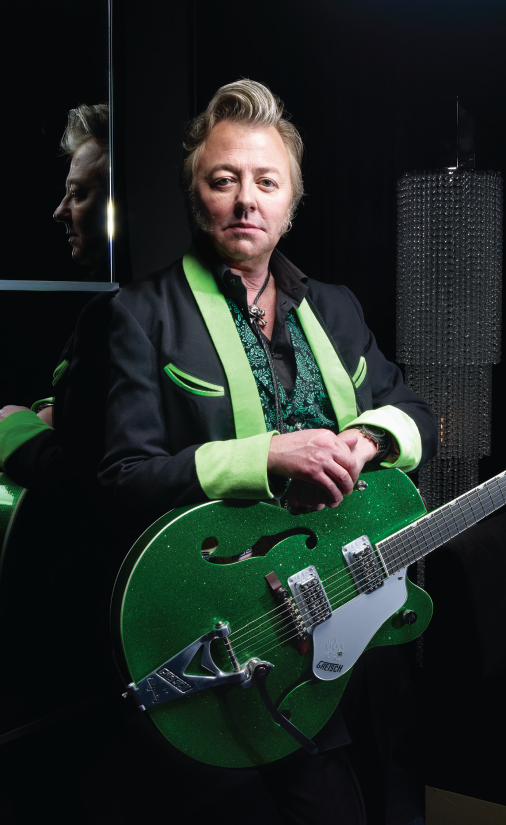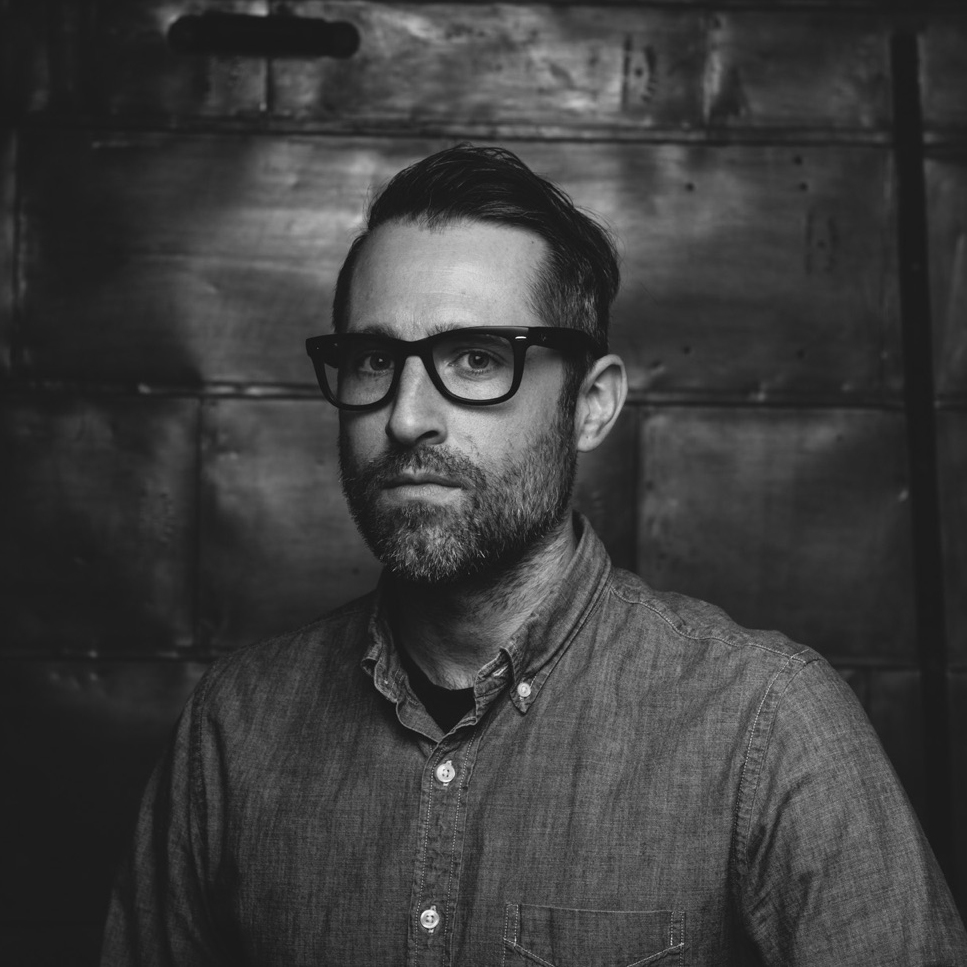Dear Guitar Hero: Stray Cats' Brian Setzer Talks Gretsch Guitars, Joe Strummer, Vintage Cars, Jazz Lessons and More

He revitalized rockabilly with the Stray Cats and revived swing and jump blues with the Brian Setzer Orchestra. But what Guitar World readers really want to know is …
Your playing style is so incredible and immaculate. Did you start with any jazz guitar training or did you just learn how to play “Stairway to Heaven” like the rest of us? — Jon Rubin
[laughs] I’m not saying I didn’t play it. Hell, we all played it; it’s a classic. But I did take guitar lessons for about 10 to 12 years, with two different teachers.
I took my first lesson when I was eight years old. I went through the Mel Bay books. Back then in Long Island, New York, there were mostly jazz players.
So my first teacher was actually a saxophone player. After that I studied with this other jazz teacher, Ray Gogarty. He took me further into the jazz world: advanced chords, a little bit of the modes, scales and standards.
I seem to remember reading that one of the cars on Stray Cats’ Built for Speed album cover was yours. Is that true? — Eric Smoot
Yeah, the ’56 Chevy on the cover of Built for Speed was mine. That Chevy actually got stolen from a parking spot years ago. I wish I still had it. I came back from doing what I was doing, and the car was gone. It broke my heart.
What first inspired you to play guitar? — Molly McAllister
I was a little kid, like six or seven years old, when the Beatles came out. I remember hearing their music and I couldn’t imagine where that sound was coming from.
Then I saw a picture of the Beatles, and George [Harrison] had an electric guitar, and I was like “That’s it!” It was that sound—the sound of George’s guitar—that first captured me when I was really young. It all goes back to that sound.
What led you down the rockabilly path? — Steve
The real defining moment for me was when I heard [Gene Vincent’s] “Be-Bop-A-Lula” on the jukebox. Back in 1976 or ’77, we had this club in Manhattan called Max’s Kansas City. There was always punk music blasting, but for some reason one day “Be-Bop-A-Lula” came on the jukebox. It was as if a hand came across the bar and grabbed me, like, “Listen to me! Listen to how cool I am!”
There was just something about the raw, back-to-basics sound that fit perfectly with the urgency of the punk movement I was in back then. To me, rockabilly music paralleled punk’s energy and feeling, but the players were much better. I’m telling you, I still remember Cliff Gallop’s solo coming out of the speaker. I went, “What the heck is that? Who’s playing this?”
I really dig your hair. What is your secret ingredient? Are you a Murray’s Pomade man? — Joe Barrios
[In radio-announcer voice] You’ve heard of Dapper Dan? Well, I’m a Murray’s man! [laughs] As my dad used to say, “You’ve got to train your hair.” And then once you’ve got it trained, you comb it in the position, throw in a little bit of Murray’s … and you’ll be a Murray’s man, too. [laughs]
What attracted you to using Gretsch hollowbodies as your main guitars? — Jeff Osgood
The first reason I wanted to play a Gretsch guitar is because Eddie Cochran played one. Believe me, when I was growing up, nobody knew who he was. I just stumbled across this record and I thought he looked cool. I had no idea he was that good.
But once I popped on the record, it was exactly the guitar sound that I wanted: somewhere between a Fender and Gibson. To me, if you play a Fender straight through the amp without any effects, it’s a little thin sounding. And a Les Paul didn’t twang enough; it was just always on 11, you know?
The Gretsch was right between those two. It had that twang, but you could really make it sing if you wanted. I guess it just fulfilled the sound I was hearing in my head.
I know you co-wrote some tracks with [late Clash singer and guitarist] Joe Strummer for your Guitar Slinger album, and I heard that you were friends with him, as well. Can you share any good stories? — Cole Slaugh
Oh, I’ve got a lot of great memories with Joe. Joe and I would spend the summers together because we were good friends and we both had children. So we’d throw the kids in the pool and have a good time. Joe had a very good, dry sense of humor, you know, and some of the things he would say were just…
Well, let’s say he was very good at making fun and making light of a situation. If you were wound up or you were aggravated about something, Joe would say a couple words, and then you would laugh and realize how silly the whole thing was. He was a great guy, and a genius of our time.
Which classic rockabilly artists would you recommend I check out to better understand the style? — Jimmy Vomvas
The definitive rockabilly album for me was Elvis Presley’s The Sun Sessions. Boy, oh boy. That probably has everything you need all wrapped up right there. Also pick up the first two Gene Vincent records: Blue Jean Bop and Gene Vincent and the Blue Caps. As a guitar player, you have to hear Cliff Gallup play with Gene Vincent and Scotty Moore play with Elvis Presley.
I love your live sound. But I’d like to know how you control feedback at stage volume. I have had this issue with hollowbody guitars in the past. — Eric A. Nay
I’ve actually never had any problems with the [Gretsch] 6120 with FilterTron pickups. The feedback that I get is kind of friendly feedback. It’s like a note, not a squeal. I love what happens on a hollowbody guitar when you’re too close to an amp. That sound comes back through the guitar and vibrates the body, like an old jalopy or something. That’s the most magical feeling to me. Once you figure it out, you can kind of control all of those feedback notes.
You’ve got an amazing sound. What is your main amp-and-effect setup? — Billy Wilson
I just use a ’63 Fender Bassman and a Roland Space Echo. I mean, my amps have been worked on, but they’re not modified—rather de-modified. Over the years people have put in the wrong tubes, cables and speakers. I try to get the Bassmans back to stock, and I like to use Celestion Vintage 30s for the speakers. I think they’re better matched to the power of the amplifier head.
I’ve always been impressed by your right-hand picking technique. Could you give me any advice on how to refine mine? — Greg Terzian
Well, first of all, anyone that tells you “This is the only right way to do it” is wrong. Any way you feel comfortable fingerpicking…if it works for you, then do it. There’s not a wrong or a right way.
When I fingerpick, I tuck my pick under my index finger; I’ll slip it down when I use the guitar pick, and then I tuck it up, and use my thumb, second, third and fourth fingers to fingerpick. I’ve never heard of anyone doing that, and I don’t know if you could call it correct, but that’s what works for me.
Do you ever get bored playing rockabilly-type stuff? If not, how do you keep your playing fresh within that style? — Justice Edwards
I always mix in new things, new influences. There are so many different styles you can play in that genre. I mean, I’m a rockabilly guitar player, but I’m influenced by all American musical styles, like jazz, blues, country and rock and roll. So the way to keep from getting bored from playing one particular genre of music is to mix in other styles.
Photo: David Bowman
Get The Pick Newsletter
All the latest guitar news, interviews, lessons, reviews, deals and more, direct to your inbox!
Brad is a Brooklyn-based writer, editor and video producer. He is the former content director of Revolver magazine and executive editor of Guitar World. His work has appeared in Vice, Guitar Aficionado, Inked and more. He’s also a die-hard Les Paul player who wishes he never sold his 1987 Marshall Silver Jubilee half stack.
“There’d been three-minute solos, which were just ridiculous – and knackering to play live!” Stoner-doom merchants Sergeant Thunderhoof may have toned down the self-indulgence, but their 10-minute epics still get medieval on your eardrums
“There’s a slight latency in there. You can’t be super-accurate”: Yngwie Malmsteen names the guitar picks that don’t work for shred

